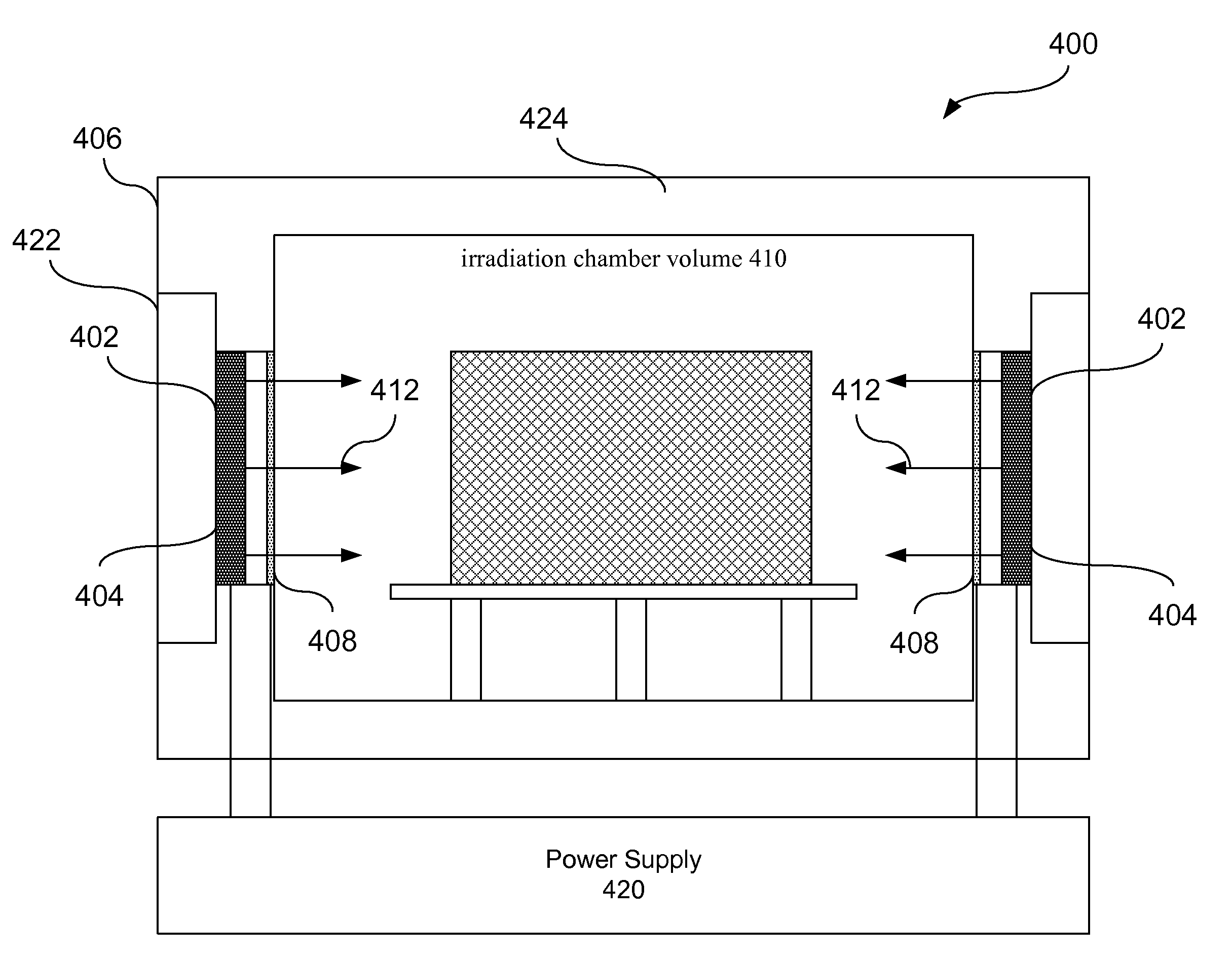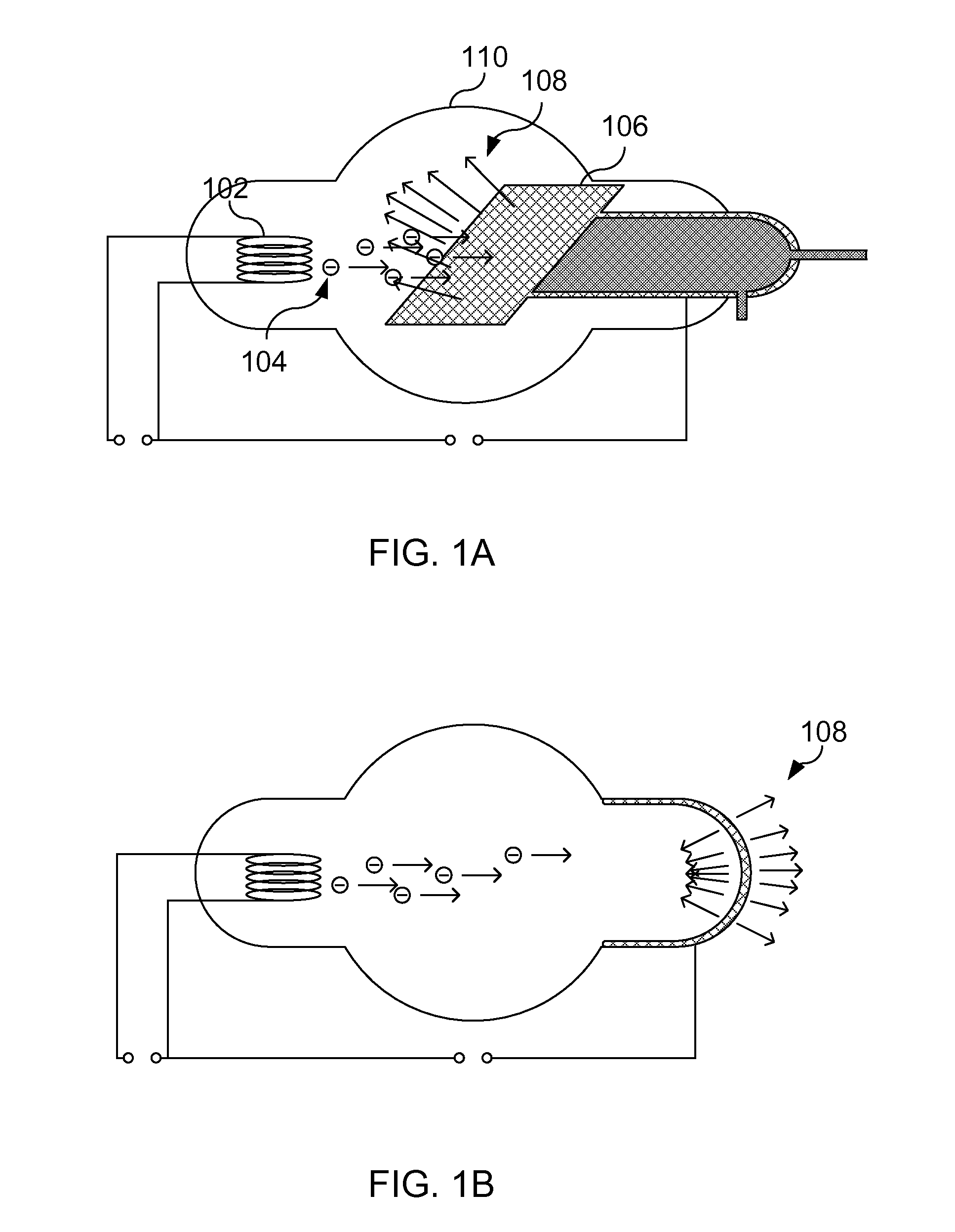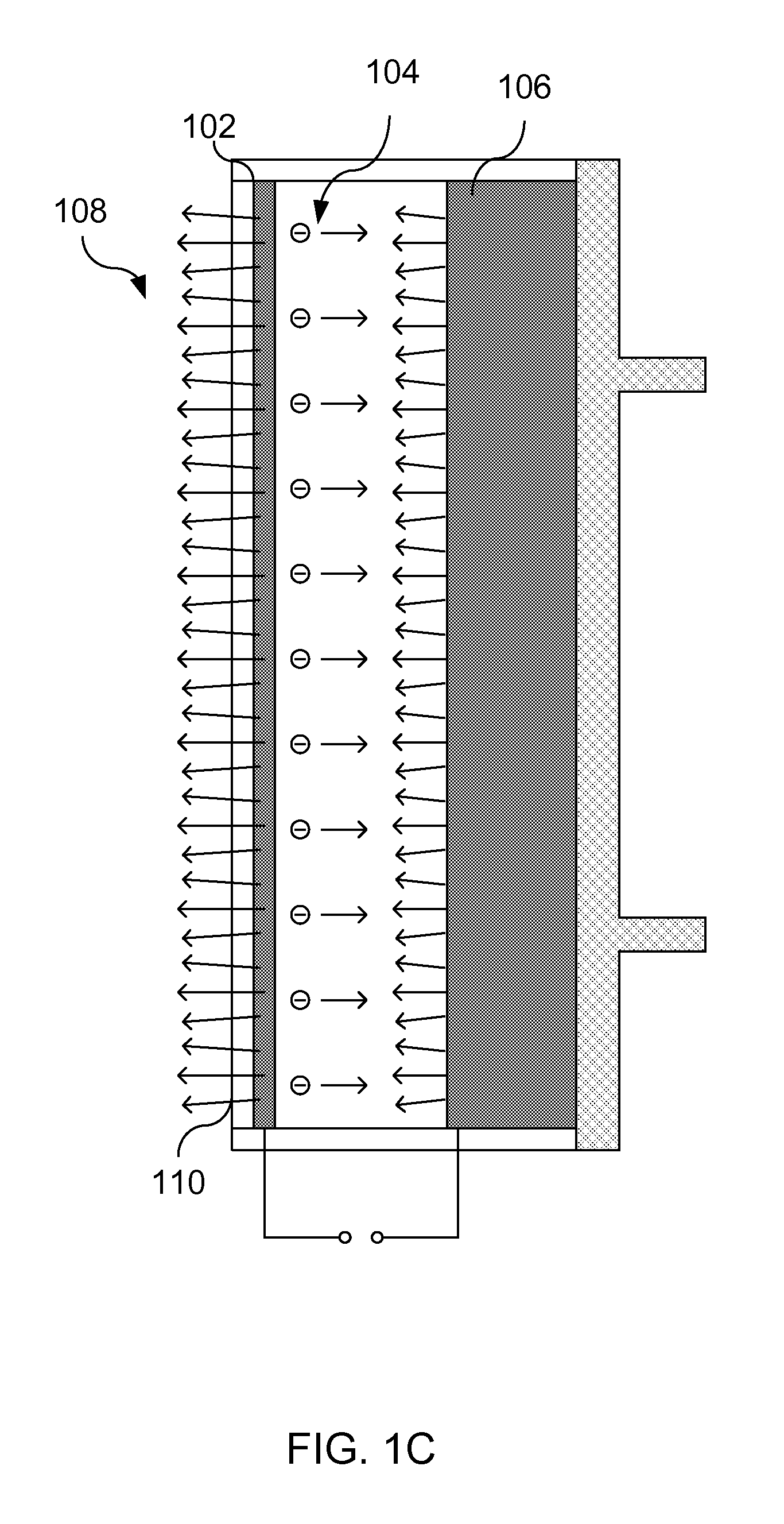Digitally addressed flat panel x-ray sources
a flat panel x-ray source and digital technology, applied in the direction of x-ray tube target materials, x-ray tube targets and convertors, nuclear engineering, etc., can solve the problems of severe thermal stress in the source, cathode x-ray tube limitations, and damage to the anode, so as to reduce the electromagnetic flux (x-ray) flux, and reduce the x-ray flux available
- Summary
- Abstract
- Description
- Claims
- Application Information
AI Technical Summary
Benefits of technology
Problems solved by technology
Method used
Image
Examples
Embodiment Construction
[0033]Preferred embodiments of the present disclosure are illustrated in the FIGs., like numerals being used to refer to like and corresponding parts of the various drawings.
[0034]The present disclosure relates to matrix addressed flat panel x-ray sources for use in applications where location specific addressing of x-ray beams is desired.
[0035]A conventional x-ray tube includes an anode, grid, and cathode assembly. The cathode assembly generates an electron beam which is directed to a target, by an applied electric field established by the anode. The target in turn emits x-ray radiation in response to the incident electron beam.
[0036]In high current x-ray tubes such as those used in tomographic imaging and radiography, high current and small spot size are desirable while operating at a high anode voltage. For these applications, electron beam current of tens of milliamps to several hundred milliamps is focused onto a small spot to generate a high intensity x-ray beam. To improve co...
PUM
 Login to View More
Login to View More Abstract
Description
Claims
Application Information
 Login to View More
Login to View More - R&D
- Intellectual Property
- Life Sciences
- Materials
- Tech Scout
- Unparalleled Data Quality
- Higher Quality Content
- 60% Fewer Hallucinations
Browse by: Latest US Patents, China's latest patents, Technical Efficacy Thesaurus, Application Domain, Technology Topic, Popular Technical Reports.
© 2025 PatSnap. All rights reserved.Legal|Privacy policy|Modern Slavery Act Transparency Statement|Sitemap|About US| Contact US: help@patsnap.com



